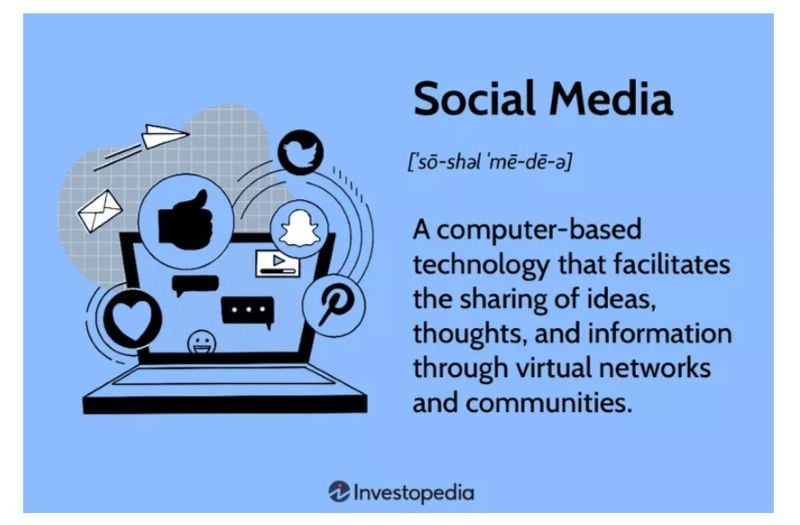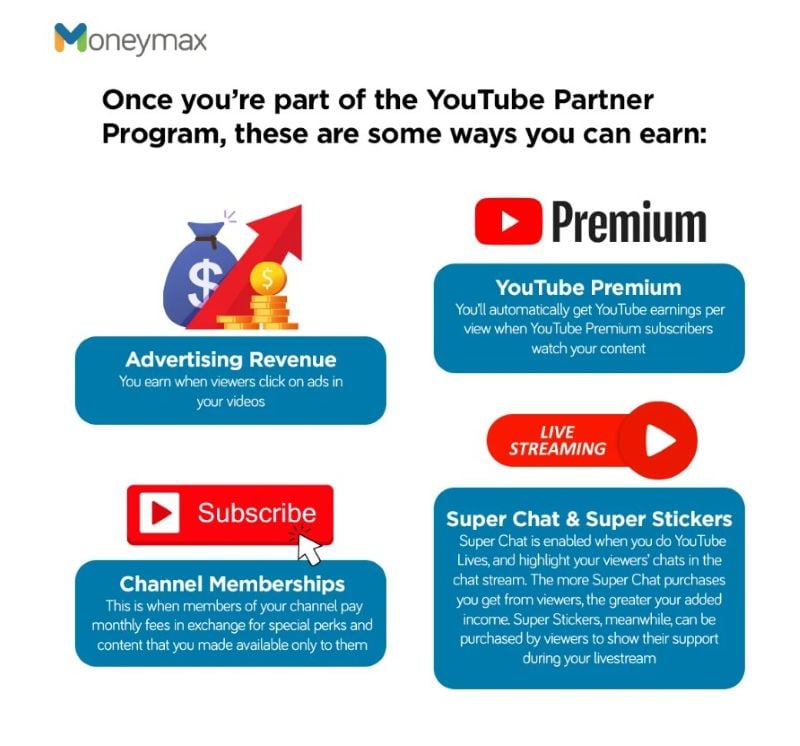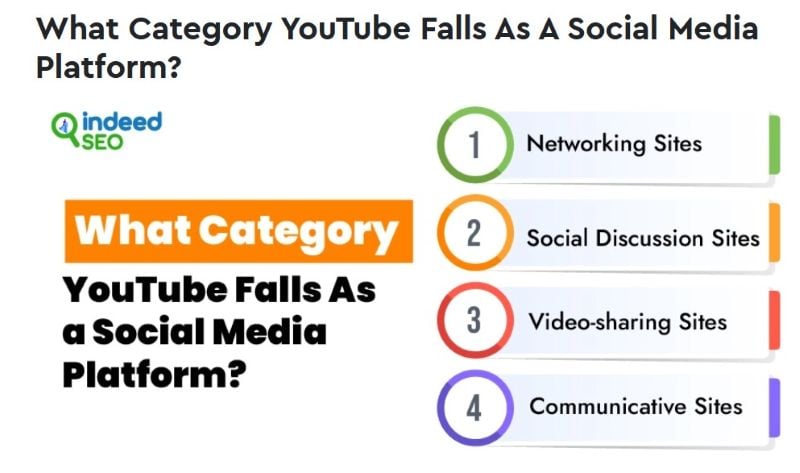Is YouTube Social Media? Why the Answer Matters for Your Biz
When people talk about social media, YouTube often gets left out of the conversation—despite being the second most visited website in the world. As a Fractional CMO and someone who’s helped brands build deeper relationships through digital content, I believe the real question isn’t whether YouTube is social media, but how we’re leveraging it as one of the many social media sites available for marketing.
In this post, I’ll break down why YouTube checks every box of a social media platform, why most businesses treat it as just a video host, and what you can do differently to drive engagement, build community, and expand your digital presence—and do so strategically.

Social media is typically identified by its core elements: user-generated content developed by active users, interaction on the site, community building, virality potential, and personalization. Each of these elements is found on YouTube’s video-sharing platform.
Let’s take a closer look: YouTube allows users to share content, engage with a community, build that community further, create (and promote) viral content, and personalize their profile on the site. YouTube, therefore, qualifies as a social media site and it can play a crucial role in your marketing strategy.
YouTube currently boasts 2.7 billion monthly users. It functions as the second largest search engine online, and boasts impressive usage stats among Gen Z and Millennials. Video content is often seen as king in social and in marketing, and YouTube allows you to combine both, with a hefty side of community engagement.
While YouTube may have once been a site primarily used for uploading personal videos, including comedy shorts and family videos, it is one of the few video-sharing sites that has truly evolved. YouTube has added features like Shorts, community posts, and even live chat during livestreams. All of these have encouraged robust social engagement–user engagement you can use to your advantage.
Social Media Platform Feature Comparison — Where YouTube Fits
| Feature | YouTube | TikTok | |||
|---|---|---|---|---|---|
| User-Generated Content | ✅ Yes | ✅ Yes | ✅ Yes | ✅ Yes | ✅ Yes |
| Content Format | Video (long/short) | Mixed (text, photo, video) | Visual + short video | Short-form video | Text, Video, Articles |
| Community Building | ✅ Channels, Comments, Community Tab | ✅ Groups, Pages | ✅ Followers, Comments | ✅ Followers, Duets | ✅ Connections, Comments |
| Direct Engagement | ✅ Comments, Likes, Live Chat | ✅ Comments, Reactions | ✅ DMs, Comments | ✅ Comments, Duets | ✅ DMs, Comments |
| Virality Potential | ✅ High | ✅ Medium | ✅ High | ✅ Very High | ⚠️ Limited |
| Algorithmic Feed | ✅ Recommended Feed | ✅ News Feed | ✅ Explore + Feed | ✅ For You Feed | ✅ Feed |
| Monetization for Creators | ✅ Ads, Memberships | ✅ Creator Fund | ✅ Brand Collabs | ✅ Creator Fund | ⚠️ Limited |
| Influencer Ecosystem | ✅ Strong | ✅ Medium | ✅ Strong | ✅ Very Strong | ⚠️ Niche |
As you can see, YouTube not only checks the boxes—it often outperforms traditional social platforms in engagement, discoverability, and community building.
How YouTube Functions as a Social Platform
Building a solid user base is essential for a social platform to thrive. YouTube has accomplished this task beautifully, putting content creators at the heart of the platform. To further support their powerful platform, YouTube has created a strong algorithm to support discovery, has excellent monetization opportunities, and offers plenty of opportunities to foster community and conversation.
User-Generated Content at the Core
While there is plenty of content that is more polished–think TV shows posting clips to drum up interest–YouTube is UGC-driven at its core. Content comes from individuals, creators, influencers, and brands, in order to offer a wide range of content types to suit seemingly endless niche interests.
There can be some ties between TikTok and Instagram Reels; after all, YouTube has Shorts, and all strive to capture and hold attention through quick, compelling clips. That being said, YouTube is primarily geared toward long-form video content, and therein lies its longevity. With the ability to deliver hours of video easily, YouTube makes it easy to deliver evergreen content and diversity in formats.
Community and Conversation
YouTube’s comment section is busy. Commenting is easy to do, and joining in on existing conversations is also easy to do. To further encourage commenting and community building, YouTube introduced a subscription model, wherein users can further develop a sense of community through channel memberships and receive updates for every new video or post.
YouTube has gone even further, providing the Community tab, polls features, and even livestream chats. All of these can build audience engagement, while encouraging influencer communities and brand devotees.
Algorithm and Virality
YouTube has an advanced recommendation engine that essentially works like a social feed. When a video plays, there is a series of suggestions on the sidebar. When a video ends, another series of videos populate the screen. At any given moment, there is a “feed” of related videos to entice viewers into clicking.
Shares are tremendously helpful to promote content, as a single share on Twitter or even through a text can help a video go viral. Engagement can also support stronger promotion for your content, as highly-engaging videos are more likely to catch the attention of the algorithm. Watch time acts similarly, as your content is promoted more, the more watch time you have under your belt.
MrBeast is a great example of virality and success on YouTube. By simply leveraging community trends, MrBeast enjoyed a period of virality, and has since built a substantial social media presence on YouTube–a presence that functions as a full-time job, with countless collaborations and a team behind the scenes.
Further Reading: YouTube Marketing Strategy: 13 Tips to Help You Grow Your Business with YouTube
Influencer Ecosystem and Monetization


YouTube has been credited with some responsibility for the rise of influencer marketing, in large part for the ease with which creators can promote products and engage in partnerships. Video ads have been around for years–and are, indeed, one of the more easily recognized forms of advertisement–and YouTube stepped in seamlessly to leverage marketing for brands.
Monetization tools like ads, Super Chats, and Memberships can help further cement influencers’ success on YouTube. These tools are similar to other platforms (virtually all platforms have ads), but Super Chats and memberships differ somewhat in their direct ability to provide payment.
Consider this: YouTube naturally offers opportunities to see larger returns. Engagement on the platform is high, and when brand values are aligned with influencers and audiences, a very strong sense of loyalty can result.
Further Reading: How Much Do YouTubers Make in 2025?
Trying to Keep Up with Digital Marketing?
Just released: my new book to help small businesses, entrepreneurs, and marketers master digital marketing in today’s digital-first world.
Drawing on my Fractional CMO experience, Digital Threads simplifies complex strategies into clear, actionable steps for success.
Transform your business today—grab your copy! Click the cover or button below to buy on Amazon.
Much of the discussion has been focused on how YouTube functions similarly to standard social media platforms, but there are some key differences. Content consumption habits may differ from one platform to another.
YouTube offers some features that other platforms do not possess, and provides users with a unique blend of both search engine and social platform. Let’s take a look at this unique blend first.
The Unique Blend of Search and Social
YouTube is a hybrid, blending both search engines and social networks. While most social platforms are used to search broad ideas or specific people, YouTube can be used to search highly specific interests, ideas, and even questions.
YouTube is also unique in this way because of the way it offers greater video length, stronger discoverability, and can more accurately identify audience intent. Consequently, many people go to YouTube for updates on existing subscriptions and to look for a wealth of new content.
Social Features You May Have Missed


Although plenty of people have used YouTube for years, there remain several valuable social features that may have gone unnoticed. Playlists can keep your interests piqued for hours on end, while channel trailers can help you get a feel for a creator. Stories help give a taste of a video, and Community posts help build community.
These features together create a full-funnel customer journey. From awareness (think Shorts), to loyalty (think playlists and community posting), YouTube can keep your online community engaged from stage one.
How Marketers Get YouTube Wrong
YouTube can be an incredible tool for marketers. There are those, however, who do not leverage it to its full extent. Many people see YouTube as a one-trick pony for long-form content, and do not consistently engage with their audiences.
Neither of these misconceptions is correct. YouTube can be used to create Shorts and community updates, both short-form in nature. It can also be used to deliver fun content, rather than focusing entirely on education.
Learn from other brands’ mistakes: make sure you are engaging with your audience on a regular basis, take advantage of all of the different video formats and posts you can post on YouTube, and have fun!
Further Reading: How to Create a Successful YouTube Channel in 8 Easy Steps
To use YouTube as a true social media platform—not just a video host—you need to approach it with community, content, and consistency in mind.
Strategic Ways to Use YouTube as a Social Media Platform
| Tactic | Description | Strategic Benefit |
|---|---|---|
| Leverage the Community Tab | Post polls, GIFs, text, and previews to engage subscribers | Builds ongoing engagement between videos |
| Collaborate with Other Creators | Partner on content to share audiences and increase credibility | Expands reach and social proof |
| Use Shorts for Quick Wins | Publish vertical, under-60-second content with strong hooks | Boosts visibility in mobile feeds |
| Reply to Comments Thoughtfully | Use comments as an opportunity to spark conversation and show expertise | Fosters community and increases watch time |
| Optimize for YouTube Search | Include keywords in titles, descriptions, and tags | Improves discoverability and ranking |
| Add CTAs to Subscribe and Share | Prompt viewers clearly within content and end screens | Drives channel growth organically |
| Host Livestream Q&As | Use live video to answer questions and interact in real time | Builds trust and authority |
| Repurpose Long-Form Content | Turn webinars or blog posts into videos or Shorts | Multiplies content ROI |
Build and Nurture Your Community
As you create content, make sure you encourage your audience to respond to your videos. Feature any fan content you may come across, and use your Community tab strategically. Also engage with other creators to drum up interest among diverse audiences.
Hosting AMAs (Ask Me Anything) and livestreams can be another excellent option to build and nurture community on YouTube. Livestreams help bring your audience together and offer access to creators in real time. AMAs help nurture a sense of intimacy and strengthen community.
Further Reading: 11 Tips on How to Grow Your YouTube Channel in 2025
Optimize for Discovery and Engagement
YouTube SEO can help drive organic search to your profile. Keyword-rich titles, tags, and descriptions can all help encourage searchers to your videos. Even your thumbnails can help drive search to you, so make sure you are considering possible search terms as you create.
Shorts, Stories, and other platforms can also be used to promote your videos. By clipping your videos and putting them on other platforms, you can further cross-promote content and encourage discovery.
Further Reading: YouTube SEO: Powerful Tips for Optimizing Your Channel and Videos
Leverage Collaborations for Growth
Collaborations are found all over on YouTube and with good reason: influencer partnerships, guest features, and creator collaborations can help fill out content calendars and find a new target audience. By collaborating, you can help your audience grow.
Collaboration can be more beneficial than discovery, as well. By collaborating, you are exposed to existing communities, who already share interests or ideas. Those shared interests may be more likely to prompt a click on that “subscribe” button.
Use YouTube for B2B Brand Building
B2B brand building can also benefit from a solid presence on YouTube. The platform is an excellent resource from which to offer your audience:
- Product explainers
- Behind-the-scenes content
- Industry commentary
- Thought leadership series
In delivering videos on these topics, you can establish yourself as a thought leader and demonstrate your abilities and know-how to your audience.
YouTube is a wonderful platform for repurposing content. The content from a recent webinar can be turned into a video. A blog post can easily take on video form. Rather than exhausting all new topics, use existing content from other platforms and sites.
Final Verdict—What Category Does YouTube Fall Into?


YouTube is a video-sharing social media platform. It checks all of the boxes to fall under the umbrella of “social media” and it does it extremely well in the arenas of both social interaction and broader audience reach.
YouTube is a unique platform, as it overlaps many different categories. Content platform, social network, influencer hub, and marketplace all in one! Having such a workhorse in your corner can help eliminate other, less-efficient platforms from your content calendar.
Rather than forcing YouTube into a single box, consider all of the different ways the platform can be used. The dynamic platform can be used as a sales funnel, a social site, a search engine, and an influencer hub, and should be leveraged as the dynamic tool it is.
So yes, YouTube is absolutely social media—perhaps even the most powerful social platform brands aren’t fully utilizing. Whether you’re building a personal brand, growing a business, or leading digital transformation as a Fractional CMO, understanding YouTube’s unique blend of search and social is critical. The opportunity isn’t just in the video views; it’s in the relationships, influence, and visibility you can create.
Treat YouTube like the social media channel it is, and it’ll return the favor with reach, engagement, and impact.
Actionable advice for your digital / content / influencer / social media marketing.
Join 13,000+ smart professionals who subscribe to my regular updates.

